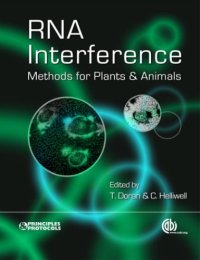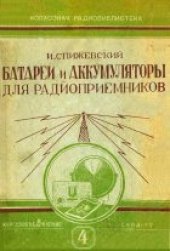
Ebook: RNA interference: methods for plants and animals
Author: Doran T. Helliwell C. (Eds.)
- Tags: FF020 - Plant Breeding and Genetics LL240 - Animal Genetics and Breeding (New March 2000) WW100 - Genetic Engineering Gene Transfer and Transgenics (New June 2002) ZZ360 - Molecular Biology and Molecular Genetics (Discontinued March 2000 Reinstated and Revised June 2002)
- Year: 2008
- Publisher: CABI
- Language: English
- pdf
The discovery that small RNA molecules act through RNA interference (RNAi) pathways as potent regulators of chromatin structure, messenger RNA (mRNA) abundance and translation, has revolutionized our understanding of gene regulation. These small RNA silencing systems have also been harnessed as powerful tools to manipulate gene expression that can be applied across eukaryotic species. The most frequent application of RNAi by researchers has been functional genomics. In combination with the increasing availability of sequenced genomes, RNAi has provided a powerful method for deciphering gene function by specific targeting of gene expression and subsequent study of the silenced phenotype. This approach has been extremely valuable in eukaryotic species for which traditional gene knockout methods are not easily applied. Gene silencing has been used to understand the function of many plant genes and is also beginning to find applications in agriculture. The researcher has a choice of silencing systems, each with particular advantages and drawbacks. The major factor in determining the silencing system for a particular application is the availability of a stable transformation system for the species being studied. Where a transformation system is available, methods based on long hairpin transgenes and artificial microRNAs (miRNA) can be deployed to best effect. The hairpin transgene and artificial miRNA can also be deployed in transient transfection systems. There are many vectors available to produce the constructs for these systems and web-based tools to assist in selecting the optimum sequences to target a particular gene. Constructs have also been developed that use recombination systems to allow rapid generation of multiple constructs for large-scale functional genomics projects. The chapters of this book cover the use of the three major gene-silencing methods in plants and the application of RNAi in major experimental animal systems. The detailed theoretical background given in each chapter and comprehensive protocols should assist researchers in effective utilization of RNAi technologies.
Download the book RNA interference: methods for plants and animals for free or read online
Continue reading on any device:

Last viewed books
Related books
{related-news}
Comments (0)


















